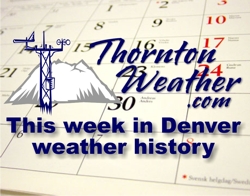
While Colorado has witnessed some pretty good rain showers in recent days due to the monsoon season, it is nothing compared to what Pakistan is experiencing. Seemingly endless monsoonal rains have flooded hundreds of thousands of acres in Pakistan that were easily spotted by NASA satellites.
The floods, said to be the worst in the nation since 1929, have claimed more than 1,500 lives and affected 3.2 million people. Entire villages have been submerged by the water that continues to rise across large swaths of the nation.
By comparison, Colorado’s worst natural disaster was the Big Thompson Flood which killed 143 people in 1976. This occurred during our own monsoon season but pales in comparison to what is happening in Pakistan.
The images taken by NASA on July 31st show the Indus River in northwestern Pakistan clearly overflowing. The difference between the image taken this year versus one taken on August 1, 2009 provide a stark contrast that demonstrates how much worse this season is.
Flooding in Pakistan – Image captured July 31, 2010 (NASA)

Pakistan – Image captured August 1, 2009 (NASA)

More on the Pakistan flooding: Floods ravage Pakistan killing 1,500 and affecting millions





 Get the rest of this story including more photos and video explaining the phenomena at the Denver Weather Examiner!
Get the rest of this story including more photos and video explaining the phenomena at the Denver Weather Examiner!

